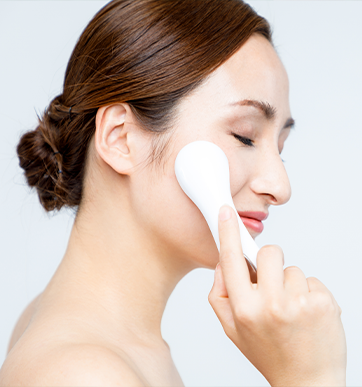
These 5 Home Skincare Devices Are Trending — Are They Worth It?
Take the pulse of social media and you’ll notice a boom in the popularity of at-home skincare devices. COVID has had a lot to do with it. During the most restrictive pandemic times, when professional treatments weren’t an option, interest spiked as people became hungry for DIY alternatives. In fact, market research company Kline Group, reports that in 2020 alone the US beauty-device market grew by 7%. And now, widespread removal of masks in public means unveiling your face to the world. You want to look good!
Heightened fervor around #selfcare and #skingoals has beauty companies elbowing to meet demand, using more influencer campaigns and other marketing tactics than ever. Claims can be cryptic, misleading or exaggerated. Yet, there are gadgets that may actually offer a nice addition to some skincare regimens.
So how can you tell if a device is worth it? Just remember that if it’s gentle enough to be approved for use by laypeople, then it’s highly unlikely to pack the power to significantly improve your skin. In other words, if the product is truly professional grade, you could risk injury using it for self care. If it’s safe for consumer use, you could just be wasting money, unless your goals are very modest.
Adjust your expectations accordingly and resist quick seduction by the latest shiny gadget, no matter how cool and promising it may seem. Before you buy, ditch social media and take a long hard look at the specs and research. Better yet, consult a skincare professional to help figure out what makes the most sense for you.
1 – Microcurrent
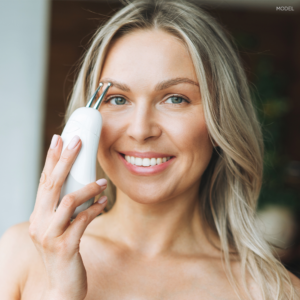 Contouring has been big on social media for years. And now it’s more popular than ever. But rather than using makeup to shape the face, there’s heightened interest in treatments that tone skin to deliver more lasting, natural-looking effects.
Contouring has been big on social media for years. And now it’s more popular than ever. But rather than using makeup to shape the face, there’s heightened interest in treatments that tone skin to deliver more lasting, natural-looking effects.
At-home microcurrent devices have come to the fore as a way to lift and contour the face from the inside. Microcurrent technology first emerged in the 1970s as a treatment for paralysis caused by Bell’s Palsy. In medical-grade applications, it helps strengthen facial muscles using electrical current to stimulate them. Cosmetically, it’s marketed as facial exercise for uplift and definition.
Worth It or Not?
Many experts believe that some microcurrent devices can promote facial toning, particularly on the forehead and jawline. Just bear in mind that consumer models will use much lower current than those for medical rehabilitation, providing a workout for your facial muscles that’s very gentle. Consequently, you need to commit to several minutes per area a few times a week every week to achieve and maintain subtle improvement, if any improvement at all.
The good news is that several brands are FDA approved as safe for at-home use. Just be sure you’re a suitable candidate, so no open sores, acne, active cancer, pacemaker, metal implants, recent surgery, diabetes or pregnancy. Check the contraindications. Also, avoid areas with filler or where muscles are being relaxed by Botox.
NuFACE, the leader in OTC microcurrent devices, and popular Swedish brand Foreo both offer a standard model for about $300. Some microcurrent devices go for upwards of $500. All require ongoing purchases of activator gel.
When to See a Pro
Talk to a professional about whether an at-home microcurrent device makes sense with your skincare regimen and goals. If you’re serious about enhancing your facial contours, you’re likely to enjoy far more exciting results from dermal fillers, Botox, surgical lifting, or professional-grade contouring technologies like Ultherapy Revitaline or Precision Tx.
2 – Radiofrequency (RF)
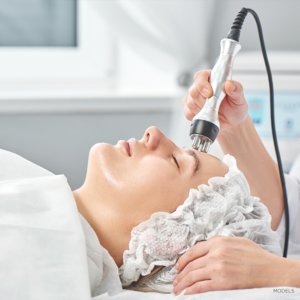 As time passes, it’s natural to start feeling like you have a little extra skin. If you’ve been cruising social media or beauty magazines for surgery-free solutions, you may be considering radiofrequency (RF) skin tightening. It sends RF waves down into the deep layers of your skin where they heat the dermis, spurring it to generate fresh, new collagen fibers. Over time your face looks more taut and firm, with softened wrinkles.
As time passes, it’s natural to start feeling like you have a little extra skin. If you’ve been cruising social media or beauty magazines for surgery-free solutions, you may be considering radiofrequency (RF) skin tightening. It sends RF waves down into the deep layers of your skin where they heat the dermis, spurring it to generate fresh, new collagen fibers. Over time your face looks more taut and firm, with softened wrinkles.
At least, that’s what clinical-grade radiofrequency treatments do! The question is: do at-home devices deliver comparable benefits?
Worth It or Not?
It can be challenging to gather straight facts and unbiased reviews for over-the-counter RF devices. You encounter a lot of marketing that touts RF technology as proven and collagen building, but few quantitative claims for any specific consumer device. Even basic specs can be hard to find, but are out there if you dig.
What you’ll learn is that at-home RF gadgets operate at a much lower frequency than in-office machines. Professional RF sessions commonly treat skin with 6 MHz and 330 watts of power, while the strongest consumer devices sometimes reach 1 MHz at 30 watts. This explains why, unless at-home treatments are carried out religiously every day, most people report seeing no difference.
Furthermore, there’s a lack of sizeable, third-party studies on the efficacy of consumer RF devices. That said, quite a few beauty editors and consumers swear by them as a way to enhance and extend the effects of more intense professional RF treatments.
Popular OTC devices Newa, Sensica Sensilift and Tripollar STOP Vx, run around $300, $300 and $600 respectively, without gel or attachments. These and a few others have been cleared by the FDA as safe for home use. Just be sure to look up contraindications, which may include having an electronic or metal non-dental implant, skin cancer, a cardiac disorder, an impaired immune system, herpes simplex, diabetes, very light or very dark skin, or an active skin condition. You should also avoid using RF devices in areas with facial fillers, Botox or post-surgery healing in progress.
When to See a Pro
The best way to find out whether RF technology is right for you is to consult an expert. If your primary aim is to stave off future wrinkles, they may determine that your skin only needs an at-home RF device to complement a personalized skincare program that includes diligent use of 30+ SPF sunscreen. If you want to reduce existing wrinkles and loose skin, they could recommend in-office RF therapy with Thermi, Thermage, Exilis or Profound RF, alone or in combination with other types of treatments or procedures.
3 – Gua Sha
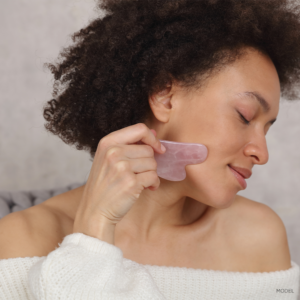 Like their cousin, the jade roller (yushi gunlun), gua sha stones are taking social media by storm! Not only do they make photogenic props, but influencers are raving about them to alleviate facial tension and firm up skin.
Like their cousin, the jade roller (yushi gunlun), gua sha stones are taking social media by storm! Not only do they make photogenic props, but influencers are raving about them to alleviate facial tension and firm up skin.
Gua sha means “scrape away illness” and is one of the oldest traditional Chinese medicine (TCM) treatments to remain in use today. It entails rubbing and scraping the skin to activate circulation of fluid, move stagnant blood and metabolic waste, and unblock congested life force or energy, called qi (also “chi”).
In TCM, the practitioner intentionally raises a rash or tiny, red dots called petechiae, which normally last two to four days. While gua sha acts via the skin, it’s used to address a wide range of medical ailments throughout the body.
Worth It or Not?
You can purchase a gua sha stone for about $20, so there isn’t much financial risk. Your big challenge is to use it correctly. It takes a lot more than a YouTube tutorial to be able to tap the full power of this centuries-old practice. If you attempt to apply TCM-level pressure and raise petechiae, you could end up with broken capillaries, bruising and discoloration — without any gua sha benefits.
A wise DIY approach is to apply it gently and in the direction of lymphatic flow. Like any good facial massage, gua sha has the potential to relax your muscles, increase circulation and aid fluid drainage. Light massages at home two or three times per week, with the aid of a gua sha stone, are a pleasant way to keep skin looking more relaxed and enlivened, less dull and puffy. Boost results by slathering your face with an actives-rich serum beforehand.
When to See a Pro
Round out your self-care program with periodic facials by an expert. See a licensed aesthetician for deep-tissue massage, cortisol-killing relaxation and clinical-grade products. They can also provide regular analyses of your skin, giving recommendations for home care and in-office treatments.
4 – Red or Blue LED
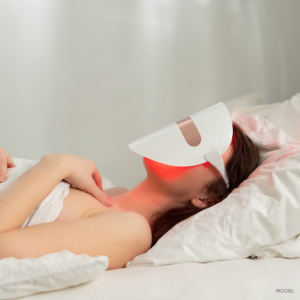 Light-emitting diode (LED) light-therapy gadgets for skin are all over the magazines and social media right now. These futuristic-looking beauty tools come in a variety of form factors, from wands and wall-mounted panels to under-eye patches and what look like sci-fi hockey masks.
Light-emitting diode (LED) light-therapy gadgets for skin are all over the magazines and social media right now. These futuristic-looking beauty tools come in a variety of form factors, from wands and wall-mounted panels to under-eye patches and what look like sci-fi hockey masks.
LED light therapy was first pioneered by NASA, then used by the US Navy in the 1990s to speed wound healing and muscle repair. Now LED light, particularly red and blue, is leveraged by dozens of devices to promote healthy, beautiful skin.
Red-wavelength light, also known as infrared, is employed cosmetically to diminish fine lines and wrinkles and make skin look more radiant. It permeates down into the epidermis where it acts on fibroblasts to stimulate collagen production, reduce inflammation and improve circulation. Blue light is used to help keep skin clear. It works closer to the skin’s surface, killing bacteria that cause acne and helping calm overactive oil glands.
Unlike ultraviolet light, red and blue light do not pose any health risks to your skin. However, if you have sensitive eyes, avoid directly exposing them to the light.
Worth It or Not?
According to Harvard Health, there is some evidence that red and blue LED light therapies work. Exactly how well is hard to say, as there have been insufficient large studies on over-the-counter devices. When you do find results documented, they’re usually subtle at best.
Prices range from around $100 to more than $2000. Popular mid-range products by Dr. Dennis Gross, Quasar and Shani Darden fall in the $250-450 range. The strongest devices tend to be the most effective.
When to See a Pro
As a preventative measure for young, healthy skin, an over-the-counter LED light therapy device could be enough for a while. But if you want to banish existing acne or signs of aging, see a professional.
You can discuss your many clinical options for rejuvenating skin. They include powerful, proven light technologies, such as intense pulsed light (IPL) and lasers like Clear+Brilliant to Fraxel Repair CO2.
For acne, talk to a dermatologist about solutions including prescription medications and medical-grade blue-light therapy with Blu-U.
5 – Pore Vacuuming
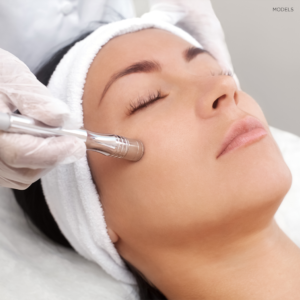 Unmasking after living so long under COVID restrictions has left many of us scrambling for ways to shrink the appearance of pores and get rid of unsightly “maskne” (mask acne). Enter: pore vacuum.
Unmasking after living so long under COVID restrictions has left many of us scrambling for ways to shrink the appearance of pores and get rid of unsightly “maskne” (mask acne). Enter: pore vacuum.
The current rage in Korea, it works as you probably imagine. The device is a kind of small vacuum cleaner that you pass over your skin to suck out excess oil, debris and other impurities. Some OTC models also exfoliate or come with a magnifying camera for a close-up view of gunk leaving your pores.
Worth It or Not?
A pore vacuum could be handy to have at home for spot cleaning on the fly. It’s a relatively safe and inexpensive gadget, so you risk little to give it a try. They go for $20 to $160, priced according to brand, strength, special features and attachments.
Just be sure to use your pore vacuum correctly. Otherwise you risk breaking capillaries, creating microtears, causing bruises and irritation, and giving yourself face hickies! Frequent tugging from the device also risks slackening your skin. Reserve the pore vacuum for occasional use, as needed and only after having steamed your face to loosen sebum.
When to See a Pro
Microdermabrasion and DermaSweep suck out impurities like a pore vacuum, but the most significant improvements they offer are from intense, clinical-grade exfoliation. These two in-office treatments can refine skin texture, brighten your complexion, even out tone, and unblock and minimize pores. Only after opening up skin with exfoliation do they use dermasuction to penetrate and deep clean, leaving your face baby pure.
Pore vacuums are not recommended for use on active acne. If you need a clearer complexion quick, see a licensed aesthetician to perform extractions and a calming facial.
Get Serious about Beautiful Skin
The COVID masks are coming off, so it’s time to up your skincare game. Before investing in any at-home device, trending or not, consult a pro about reaching your skincare goals. They can help you come up with the best combination of in-office treatments and at-home care for you. You’ll look forward to stepping out into public and revealing your best skin.


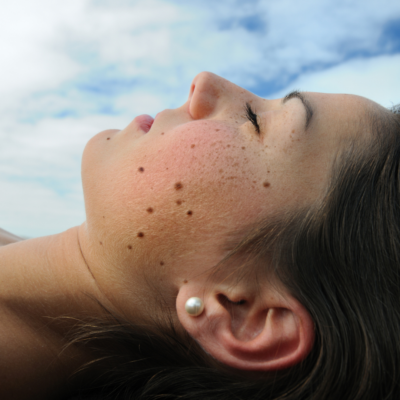
 / 291 Reviews
/ 291 Reviews